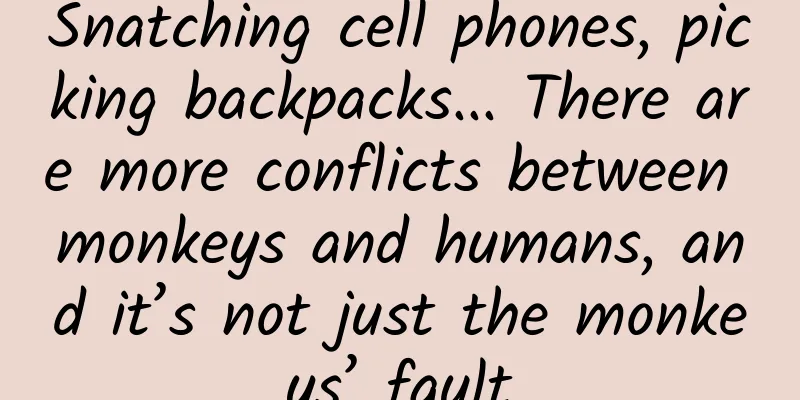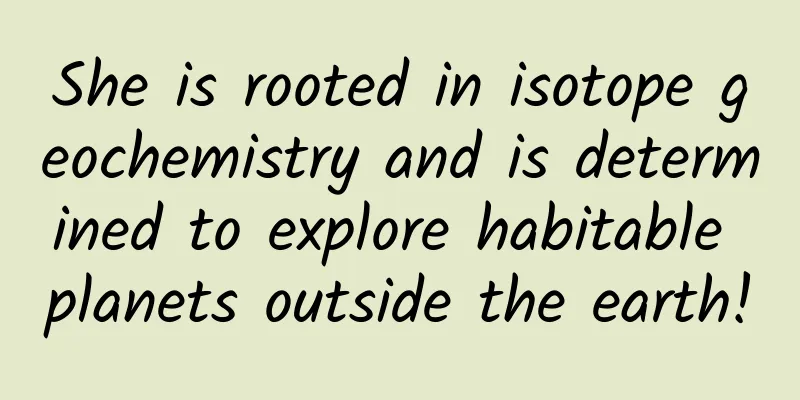How was China's first castle in the air built?

|
Five Thousand Years of Chinese History We have built countless traditional buildings There are still 263885 places Spread across China (The above number of ancient Chinese buildings is based on the third national cultural relics survey; the figure below shows the distribution of major ancient buildings in China, drawn by @Gong Xiangjie & Zhang Jing/Planet Research Institute) ▼ Most of them Or built on flat land Or built on a relatively gentle mountain slope About 1500 years ago In the mountains of northern Shanxi But a "castle in the air" appeared Hanging on the cliff It is called "Hanging Temple" (Hanging Temple, photographer @杨柳岸) ▼ Above the pavilion is a huge and dangerous rock. The limestone formed by ancient marine sediments has clear stratification Arranged neatly like an array Slashing the sky Forming a "monoclinic structure" in geology (Hanging Temple, photographer @杨柳岸) ▼ Below is a river that often floods. Summer sudden rain and flood Carrying mud, sand and gravel Continuously washing the valley (The Hanging Temple on the left, Tangyu River on the right, photographer @杨柳岸) ▼ Until modern times People built dams upstream Formed a reservoir of 13.3 million cubic meters Gradually eliminate the flood disaster (Hengshan Reservoir, built in 1960, is mainly used for flood control and irrigation. The Hanging Temple is on the lower right. Photographer: @杨柳岸) ▼ The Hanging Temple is located between such mountains and waters. The bottom of the highest pavilion About 90 meters from the valley below Equivalent to 30 floors or the height of the Statue of Liberty (Height diagram of the Hanging Temple. This is the relative height when it was first built. Later, due to river siltation, the relative height dropped to 60-70 meters. Map by @张靖/Planetary Research Institute) ▼ Why are you here Build such a tall building? Ancient people 1500 years ago What kind of imagination and wisdom do you have? 01 origin 1500 years ago China was divided into the Northern and Southern Dynasties Tuoba Xianbei moved south from the grassland Established the Northern Wei Dynasty in the north The territory extends to the south of the Yellow River (Northern Wei territory, 449 AD, map by @Gong Xiangjie & Zhang Jing/Planetary Research Institute) ▼ Its capital city Pingcheng (Datong) Located in Datong Basin, Shanxi Surrounded by mountains on all sides, with crisscrossing peaks and ridges The Hengshan Mountains in the south are particularly dangerous. The highest peak, Tianfengling, is 2016 meters above sea level. It is revered as the Northern Mountain for its natural beauty. The emperor sits in the natural fortress Control the Central Plains with two important transportation routes A road running through Shanxi South to Bingzhou (Taiyuan) A road cut through Hengshan Mountain Connecting to the North China Plain (Diagram of Datong Basin and surrounding terrain, drawn by @张靖&公向杰/Planetary Research Institute) ▼ The road was built by tens of thousands of soldiers in Hengshan Mountain. Digging day and night Huge engineering relics Survived till now (The stone hole on the mountain is the remains of the Northern Wei plank road, located near the Hanging Temple, photographer @杨柳岸) ▼ Various religions also gathered in the capital The Faith of the Emperor and the Nobles Swinging Under the influence of Taoism The emperor built a large number of Taoist temples The five-story Tianshi Dojo Rising from the ground in the capital Yue Temple , a temple dedicated to the state Standing on the main peak of Hengshan Mountain (The Beiyue Palace of Hengshan Mountain was first built in the Northern Wei Dynasty. The picture comes from @图虫创意) ▼ Under the influence of Buddhism They also excavated the Yungang Grottoes in Datong Expanding the Mogao Grottoes in Dunhuang When they went south The trend of excavating caves was brought to Luoyang. Formation of Longmen Grottoes China's three major grottoes are actually closely related to the Northern Wei Dynasty (Cave 20 of the Yungang Grottoes, carved in the image of the Northern Wei emperor, image from @VCG) ▼ Buddhism and Taoism compete for believers The emperor and nobles gave their full support These are all for building more imaginative temples. Laying the foundation It must be built somewhere special Show special effects A special reverence Hanging Temple It is in this context Born out of necessity 02 Construction Builder of the Temple We chose a valley at the foot of Hengshan Mountain. On the east side of the valley is the main peak, Tianfengling To the west is Cuiping Peak, which is over 1,600 meters above sea level. In the middle is the Tangyu River, a secondary tributary of the Sanggan River. Mountain view, water view Create a paradise The plank road connecting the capital and the North China Plain Passing through the valley Pedestrians travel back and forth between the north and south It is the " fairyland " Close to the world A perfect location for a temple (There is no reliable record of whether the temple was built for Buddhism or Taoism; the following picture shows the scenery around the Hanging Temple, photographer @杨柳岸) ▼ but How can a temple weighing more than ten tons be transported? Hanging on the mountain? ① first It requires a set of "hooks" Halfway up Cuiping Peak on the west side of the valley Not straight up and down It's a natural groove . The craftsmen hung from a height Enlarging the groove using tools Carve out a platform to perform (Sketch of mountain excavation, drawn by @Zhang Jing/Planetary Research Institute) ▼ Then a huge stone hole was chiseled on the platform. The stone hole is big inside and small outside Several meters deep The "hook" will be installed here (Stone hole diagram, map by Zhang Jing/Planetary Research Institute) ▼ The “hook” itself is also quite interesting. It is made of hard hemlock wood And soak it in tung oil for a long time Anti-corrosion and moisture-proof The most amazing thing is the end of the wood Pre- wedge When these woods are inserted into the stone holes The wedge will hold the wood apart. It just happens to be stuck in a stone hole that is large inside and small outside. Equivalent to the modern " expansion screw " (“Expansion screw” diagram, drawn by @Zhang Jing/Planetary Research Institute) ▼ More than two-thirds of the length of these logs is deep in the mountain. Rock platform as fulcrum Each can bear several tons of weight. The hook is now ready (“Hook” diagram, drawn by @Zhang Jing/Planetary Research Institute) ▼ ② frame After having the "hook" Craftsmen once again started "suspended work" Carrying construction materials up the cliff Then hang it to the "hook" (Schematic diagram of material transportation, drawn by @Zhang Jing/Planetary Research Institute) ▼ In mid-air Craftsmen use "hooks" as crossbeams Columns on beams Build beams and rafters on the pillars Using traditional Chinese mortise and tenon beam combination Joining building materials together (Assembly diagram of mortise and tenon beams, drawing by @张靖/Planet Research Institute) ▼ Stacking up like building blocks A complete framework It's formed (Tenon and mortise beam system, drawing by @Zhang Jing/Planet Research Institute) ▼ ③ Palace With the framework Roof, doors, windows and railings are laid one after another Layers of palaces and pavilions emerge (Palace construction. Since the existing Hanging Temple was mainly rebuilt during the Ming and Qing Dynasties, the architectural style presented in this article is also from the Ming and Qing Dynasties. Map by @张靖/星球研究院) ▼ Inside the palace To get more space The craftsmen continued to dig out caves on the side of the mountain. Caves connected to halls, halls connected to caves Forming a wooden high-altitude cliff building (Grottos and pavilions, map by Zhang Jing/Planetary Research Institute) ▼ The main building of the Hanging Temple Two lofts in the north and south This is how the construction is completed in South Building 3 floors About 8 meters long and 4 meters wide From low to high, they are Chunyang Palace, Sanguan Hall and Leiyin Hall (South Building, Map by Zhang Jing/Planetary Research Institute) ▼ The north building is also three stories high. About 7 meters long and 4 meters wide The lowest level is the Five Buddha Hall The middle floor is the Guanyin Hall The top is the Three Religions Hall (North Building, Map by Zhang Jing/Planetary Research Institute) ▼ then Including temples and meditation rooms Buddhist temple, drum tower, bell tower 40 halls of various sizes North-South staggered arrangement (Hanging Temple complex, map by Zhang Jing/Planet Research Institute) ▼ Between the Palaces Connected by plank roads Later generations added two layers of plank roads. Forming a closed loop People walk on it The stairs are bright or dark, winding and circuitous Like climbing a ladder to heaven (Sketch of the plank road inside the Hanging Temple. The lower plank road is a modern addition. Map by @Zhang Jing/Planet Research Institute) ▼ final A complete Hanging Temple A hanging temple that is no less impressive than a temple on the ground It appeared before our eyes A miracle (Please watch in horizontal screen, Hanging Temple complex, map by @Zhang Jing/Planet Research Institute) ▼ 03 Miracle View from the outside The Hanging Temple complex is integrated with the rocks As if they all came from the cliff Naturally grown This is in people's minds It produced quite an amazing effect "Cloudside Shore" and "Hanyun Pavilion" "Unique in the Sky" and "Cliff-like Buildings" "Color in the sky" and "Gongshu Tianqiao" "Northern Terrace" and "Return to Dreams" Praises from all dynasties are endless (The word "spectacular" next to the Hanging Temple is said to be written by Li Bai. The original is no longer extant. In 1990, it was re-engraved using a rubbing of Li Bai's handwriting from the Huayan Temple. The extra dot next to it means "a little more spectacular than spectacular", photographer @杨柳岸) ▼ Xu Xiake , a Ming Dynasty traveler Visited Mount Heng in 1633 When he saw the Hanging Temple, But you need the courage to climb (From Xu Xiake's Diary of a Trip to Mount Heng) ▼ “The building is high up…Looking up, one’s spirit soars, one musters the courage to climb alone…It is a magnificent sight for the world” Mr. Jin Yong is in the world of martial arts Praise the Hanging Temple (Quote from Jin Yong's "Swordsman") ▼ "In a place where pines cannot grow and monkeys cannot climb, he made a great wish and built a temple out of thin air" (Hanging Temple, photographer @杨柳岸) ▼ The Miracle of the Hanging Temple First, a mechanical miracle It successfully shaped A light and floating illusion Only those who understand the principle will know Its rigorous and sophisticated structure Makes it quite stable (Wooden frame of the Hanging Temple, drawing by @Zhang Jing/Planet Research Institute) ▼ Later generations also found it under the pavilion Dozens of slender columns were added This creates another illusion As if the whole building All supported by these trembling pillars (Hanging Temple pillars, photographer @胡澍) ▼ (Shaking pillars, photographer @石耀臣) ▼ In fact In general These columns are not load-bearing. But in extreme cases The pillars are equivalent to adding a layer of insurance for the Hanging Temple. This makes the Hanging Temple different from a general "static structure" Leaping to be able to withstand extreme situations " Super statically indeterminate structure " According to the local county records In the last 40 years There have been two earthquakes of magnitude 6 or above. The Hanging Temple still stands tall This includes the traditional Chinese wooden frame beam and column system. And the credit of the pillars below (Schematic diagram of hyperstatic structure, drawing by @Zhang Jing/Planetary Research Institute) ▼ Secondly The Miracle of the Hanging Temple It is also a miracle of location Its location creates a "suspended" effect It also adds many advantages to the Hanging Temple Cuiping Peak, where the Hanging Temple rests The mountainside is a natural groove The top naturally extends outwards Can prevent rainwater from eroding The higher location also avoids flooding. (The Hanging Temple is not exposed to rain, map by @Zhang Jing/Planetary Research Institute) ▼ Between Cuiping Peak and Tianfeng Ridge Forming a bay-shaped valley Serves as a safe haven Reduced wind erosion of the Hanging Temple Like a loving mother holding it in her hands Comprehensive care (The Hanging Temple that is not reachable by wind, drawn by @Zhang Jing/Planetary Research Institute) ▼ The mountain also blocks the sunlight for the Hanging Temple. Average daily direct sunlight hours Only 2-3 hours It can prevent wood weathering caused by exposure to the sun (The sunlight of the Hanging Temple is blocked by the mountain, photographer @许兆超) ▼ at last The Miracle of the Hanging Temple Or is it a miracle of religious integration? Experienced the Buddhist-Taoist struggle Experienced conflicts between different faiths At the latest in the Jin Dynasty The Hanging Temple has become A unique temple that integrates Confucianism, Buddhism and Taoism In Chunyang Palace Enshrining the Taoist Lü Dongbin (Chunyang Palace of the Hanging Temple, photographer @杨柳岸) ▼ In the Leiyin Palace The Buddha Sakyamuni is enshrined in the temple. (Leiyin Hall of the Hanging Temple, photographer @王寰) ▼ The Three Religions Hall At the same time, Laozi, Confucius and Buddha are worshipped. Some people even interpret the word "Xuankong" as "Xuankong". "Xuan" represents Taoist doctrine "Emptiness" represents Buddhist teachings (The Three Teachings Hall of the Hanging Temple, image source: @图图网) ▼ 04 end After more than 1500 years of wind and frost The Hanging Temple has seen the comings and goings of people Clouds Rising After the dynasty change The Rise and Fall of Stars and Moon It has been repaired many times during wars and natural disasters. What we saw today It is basically a relic rebuilt during the Ming and Qing dynasties. (2016 Hanging Temple dangerous rock reinforcement project, scaffolding from the foot of the mountain to the top of the mountain, photographer @雾雨川) ▼ The Northern Wei Dynasty that created it Buried in the sands of history And it is still there, counting the vicissitudes of life Flow with time (Hanging Temple in winter, photographer @城市穿越客) ▼ As architect Luo Zhewen commented ▼ "A fairy mountain pavilion-like combination with high artistic value" This is China's first "castle in the air" Imagination from 1500 years ago (Hanging Temple, map by Zhang Jing/Planetary Research Institute) ▼ This article was created by Written by: Director, Li Zhangziwei Map: Zhang Jing Image: Yu Kuan Map: Gong Xiangjie Review: Lushumao 【References】 1. Li Ping, The Pingcheng Period of the Northern Wei Dynasty, Shanghai Ancient Books Publishing House, 2014 2. Zhang Jianyang, Records of Mount Hengshan, Shanxi People's Publishing House, 2008 3. Hao Yun et al., “Three Saints Hanging in the Sky at Mount Hengshan”, CCTV, 2012 4. Hao Weihe, “The Millennium Hanging Temple”, Cultural Relics World, 2007 5. Zhang Yingming, "Research on the Construction Art of Traditional Chinese Temples and Taoist Temples in Special Natural Terrain Environment", Xi'an University of Architecture and Technology, 2012 6. Xu Yuemei, "The mechanical secret of the Hanging Temple's "hanging but not dangerous"", Mechanics and Practice, 2011 7. Zhao Qiang, “Research on Landscape Architecture Design of Mountain Scenic Areas Supported and Restricted by Engineering Technology”, Xi’an University of Architecture and Technology, 2013 8. Ma Lei, “Research on the Expression of Lightness in Architecture”, Kunming University of Science and Technology, 2012 9. Liang Bianfeng, “Skills Carry the Dao, Dao and Art Combined: Cases and Theoretical Explorations of the Integration of Technology, Ethics and Art in Ancient Chinese Architecture”, Shanxi University, 2012 10. Song Yuhan, “A Brief Look at the Convergence of Three Religions in the Wei, Jin, Southern and Northern Dynasties from the Three Religions Hall of the Hanging Temple”, Oriental Enterprise Culture, 2012 ... The End ... Planetary Research Institute |
>>: After the white sturgeon, will the “mermaid” also leave?
Recommend
Toothache is really a disease! Not only does it hurt, it can also cause these physical diseases——
Review expert: Wang Xuejiang, professor at Capita...
The rise and fall of Chinese smartphones as seen from Taobao sales
Smartphones have been one of the hottest consumer...
After the 3.15 Gala, how can brands prevent marketing risks?
The annual 3.15 Gala of China Central Radio and T...
Practical Guide: How to promote second-tier e-commerce?
Today I will share with you a practical guide for...
Would you drink beer if it doesn't have alcohol?
Beer can be said to be a versatile artifact in su...
Is the heart shaped like a heart? No, it's shaped like a noodle.
The heart shape has always been a symbol of love ...
Strategies to improve user retention
I have written an article in my previous diary ca...
Sogou advertising, account opening, and display formats
What is Sogou Promotion? Sogou search promotion i...
Baidu Maps' new energy navigation function is newly upgraded on May 1: real-time dynamic reminders to solve the problem of "difficult charging" for car owners
It is the peak travel season for May Day again, a...
Who understands! It turns out that the whole world is pretending to be "adults"
After the Chinese New Year, in the eyes of your p...
Why did LeTV Super TV win the Double 11 championship for three consecutive times?
On November 11, 2014, LeTV Super TV’s total sales...
How can community apps perform good product operations? 13 ways to promote community applications!
The key to the early success of community product...
Why can’t we see the far side of the moon from Earth? How difficult is it for Chang’e-6 to land on the far side of the moon?
Why can't we see the far side of the moon fro...
App promotion: Is winter coming? How to promote products at low cost!
First of all, what I want to tell you is that in ...
The increase is far greater than the price of gold. Maybe one day we will have to say goodbye to chocolate... | Expo Daily
The increase far exceeds the price of gold. Maybe...









